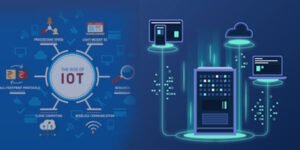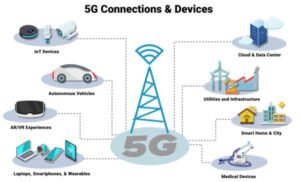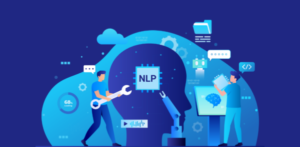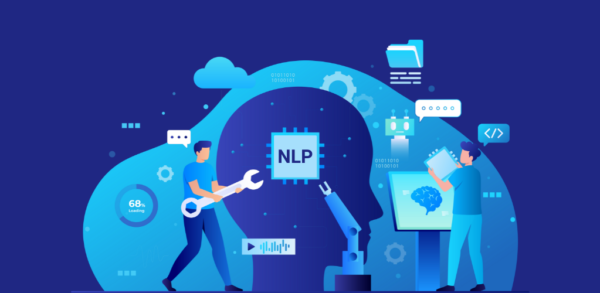X1-Unleashing Potential: A Deep Dive into Artificial Intelligence (AI) and Machine Learning

Artificial Intelligence (AI) and Machine Learning (ML) represent a transformative frontier in the realm of technology. This article aims to unravel the intricacies of AI and ML, exploring their applications, impact on industries, and the promising future they hold.
1. Defining AI and ML: At its core, AI refers to machines or computer systems designed to mimic human intelligence. ML, a subset of AI, involves systems learning from data patterns to improve their performance over time. Together, they empower machines to perform tasks that traditionally required human intelligence.
2. Applications Across Industries: AI and ML have found applications across diverse industries. In healthcare, predictive analytics aids in disease diagnosis. In finance, algorithmic trading leverages ML for market analysis. Explore how these technologies are reshaping sectors such as education, logistics, entertainment, and more.
3. Automation and Efficiency: One of the primary benefits of AI and ML is their ability to automate repetitive tasks, increasing efficiency and freeing up human resources for more complex endeavors. From chatbots handling customer queries to automated data analysis, these technologies streamline processes.
4. Natural Language Processing (NLP) and Conversational AI: Advancements in NLP enable machines to understand and respond to human language. Conversational AI, including virtual assistants like Siri and Alexa, showcases the integration of these technologies into our daily lives, providing seamless interactions between humans and machines.
5. Predictive Analytics and Decision-Making: ML algorithms excel at analyzing vast datasets to make predictions and informed decisions. Explore how predictive analytics aids businesses in forecasting trends, optimizing supply chains, and making data-driven decisions for improved outcomes.
6. Image and Speech Recognition: AI and ML power image and speech recognition technologies, leading to breakthroughs in facial recognition, voice assistants, and more. Understand how these capabilities enhance user experiences and contribute to advancements in security and accessibility.
7. Ethical Considerations and Bias: As AI becomes more pervasive, ethical considerations come to the forefront. Delve into discussions surrounding bias in algorithms, data privacy concerns, and the importance of responsible AI development to ensure fair and unbiased outcomes.
8. Future Frontiers: Quantum Computing and AI Collaboration: Explore the evolving landscape of AI with the integration of quantum computing. The synergy between quantum computing and AI promises unprecedented computing power, opening doors to solving complex problems that were once considered impractical.
Artificial Intelligence and Machine Learning are catalysts for a technological revolution, reshaping industries, and influencing our daily lives. As these technologies continue to evolve, it is crucial to foster ethical practices and responsible development, ensuring that the immense potential they hold benefits society as a whole. Embrace the future where AI and ML lead the way in innovation and problem-solving, propelling us into a new era of intelligent machines and endless possibilities.
X2-Revolutionizing Connectivity: The Internet of Things (IoT) Era
The Internet of Things (IoT) has emerged as a revolutionary force, transforming the way we interact with technology and the world around us. This article explores the IoT revolution, shedding light on its definition, applications, and the profound impact it has on various aspects of our daily lives.

1. Defining the Internet of Things (IoT): At its core, IoT refers to the interconnectivity of everyday devices and objects through the internet. This interconnected network allows for seamless communication and data exchange, creating a web of smart, responsive devices that enhance efficiency and convenience.
2. Smart Homes and Connected Living: In the realm of smart homes, IoT has become a game-changer. Explore how interconnected devices, from thermostats to security systems, enable homeowners to control and monitor their living spaces remotely. This not only enhances security but also contributes to energy efficiency.
3. Industrial IoT (IIoT) and Smart Manufacturing: IoT’s impact extends to industries through Industrial IoT (IIoT), transforming manufacturing processes. Discover how sensors and connected devices optimize production, monitor equipment health, and facilitate predictive maintenance, ultimately improving overall operational efficiency.
4. Healthcare Revolution: In healthcare, IoT is driving innovation by connecting medical devices and wearables. Explore how smart health monitoring devices enable real-time patient data collection, remote diagnostics, and personalized healthcare solutions, revolutionizing patient care.
5. Smart Cities and Urban Planning: The concept of smart cities involves integrating IoT technologies into urban infrastructure for enhanced efficiency and sustainability. Learn how IoT applications in transportation, energy management, and waste disposal contribute to the development of smarter, more livable cities.
6. Agriculture and Precision Farming: In agriculture, IoT is transforming traditional farming practices into precision farming. Discover how connected sensors, drones, and automated machinery optimize crop management, leading to increased productivity and sustainable agricultural practices.
7. Retail and Customer Experience Enhancement: IoT is reshaping the retail landscape by providing personalized and immersive customer experiences. Explore how smart shelves, beacons, and inventory management systems create a seamless shopping experience, both in physical stores and online.
8. Security and Privacy Challenges: As IoT becomes integral to daily life, concerns about security and privacy arise. Delve into the challenges and considerations surrounding IoT security, including data encryption, device authentication, and safeguarding against cyber threats.
9. Future Prospects and Innovations: Explore the ongoing developments and future prospects of IoT, including the integration of edge computing, 5G technology, and AI. Uncover how these innovations will further enhance the capabilities and scope of the IoT revolution.
The Internet of Things (IoT) is more than a technological advancement; it is a paradigm shift that is reshaping the way we live, work, and interact with the world. As IoT continues to evolve, addressing security concerns and fostering responsible implementation will be essential to unlock its full potential. Embrace the IoT revolution as it propels us into a future where connectivity is not just a convenience but a transformative force driving progress and innovation.
X3-Unleashing the Power of Connectivity: Exploring 5G Technology

The dawn of the 5G era marks a transformative leap in the world of telecommunications, promising unparalleled speed, low latency, and connectivity that goes beyond our current expectations. This article delves into the realms of 5G technology, exploring its definition, potential applications, and the profound impact it is set to make on the way we communicate.
1. Understanding 5G Technology: At its core, 5G, or the fifth generation of wireless technology, represents a significant evolution from its predecessors. Dive into the technical aspects of 5G, including its increased data transfer rates, low latency, and the use of advanced frequency bands.
2. Lightning-Fast Speeds and Low Latency: One of the hallmark features of 5G is its extraordinary speed. Explore how 5G networks provide lightning-fast data transfer rates, allowing for instantaneous downloads, ultra-high-definition streaming, and an overall more responsive user experience due to significantly reduced latency.
3. Transforming Mobile Experiences: Discover how 5G is set to revolutionize mobile communication. From faster internet browsing to enhanced video conferencing capabilities, the implementation of 5G technology will redefine the way we connect and interact using our mobile devices.
4. Internet of Things (IoT) Connectivity: 5G’s robust infrastructure is tailor-made to support the massive connectivity demands of the Internet of Things (IoT). Explore how 5G will facilitate the seamless communication of countless devices, enabling the growth of smart cities, connected homes, and a myriad of IoT applications.
5. Enabling Virtual and Augmented Reality: With its high bandwidth and low latency, 5G is poised to unlock the full potential of virtual and augmented reality experiences. Delve into how this technology will enable more immersive gaming, virtual tours, and augmented reality applications, transforming the way we experience digital content.
6. Applications in Industry 4.0: In the context of Industry 4.0, 5G plays a pivotal role in revolutionizing manufacturing processes. Explore how this technology facilitates real-time monitoring, precision control of machinery, and the widespread adoption of smart factories, ushering in a new era of industrial efficiency.
7. Enhanced Telemedicine and Remote Work: The capabilities of 5G extend to the realms of telemedicine and remote work. Learn how this technology enables high-quality, real-time video consultations in healthcare and supports seamless collaboration for remote workers, fostering a more connected and accessible global workforce.
8. Challenges and Considerations: While the promises of 5G are vast, it comes with challenges such as infrastructure development, spectrum allocation, and security concerns. Examine the considerations that need to be addressed to ensure the successful and responsible deployment of 5G networks.
Conclusion: 5G technology is not merely an evolution; it is a revolution in connectivity that promises to reshape the way we live, work, and communicate. As we embrace the era of 5G, understanding its potential applications and addressing associated challenges will be key to unlocking the full benefits of this transformative technology. Prepare for a future where connectivity transcends boundaries and opens up a world of possibilities we have yet to fully explore.
X4-Bridging the Gap: The Wonders of Natural Language Processing (NLP) and Conversational AI

In the ever-evolving landscape of artificial intelligence, Natural Language Processing (NLP) and Conversational AI stand out as technological marvels, bringing us closer to seamless interactions between humans and machines. This article explores the intricacies of NLP and the transformative potential of Conversational AI in revolutionizing the way we communicate with technology.
1. Decoding Natural Language Processing (NLP): NLP is a branch of artificial intelligence that focuses on enabling machines to understand, interpret, and respond to human language. Delve into the complexities of NLP, which involves tasks like language translation, sentiment analysis, and speech recognition, allowing computers to comprehend and generate human-like language.
2. Conversational AI: A Gateway to Interaction: Conversational AI takes NLP a step further, aiming to create intelligent and responsive virtual agents capable of engaging in natural, human-like conversations. Explore how Conversational AI systems, including virtual assistants and chatbots, are designed to comprehend user inputs, interpret intent, and provide relevant responses in real-time.
3. Applications in Customer Service: In the realm of business, Conversational AI is reshaping customer service interactions. Learn how intelligent chatbots assist users in troubleshooting, answer frequently asked questions, and provide personalized assistance, enhancing the overall customer experience while freeing up human agents for more complex tasks.
4. Virtual Assistants: Transforming Daily Life: Virtual assistants powered by NLP and Conversational AI have become integral to our daily lives. Explore how these digital companions, such as Siri, Alexa, and Google Assistant, help with tasks ranging from setting reminders and sending messages to controlling smart home devices, making technology more accessible and user-friendly.
5. Multilingual Capabilities: Breaking Language Barriers: One of the strengths of NLP is its ability to process and understand multiple languages. Understand how NLP algorithms are breaking down language barriers, facilitating communication across diverse linguistic landscapes and fostering global connectivity.
6. Sentiment Analysis for Insightful Decision-Making: NLP plays a crucial role in sentiment analysis, allowing businesses to gauge public opinion and customer feedback. Explore how this technology analyzes social media, reviews, and customer interactions to provide valuable insights, helping businesses make informed decisions and adapt to market sentiments.
7. Challenges and Future Developments: While NLP and Conversational AI have made significant strides, challenges such as understanding context, handling ambiguous queries, and ensuring data privacy remain. Investigate the ongoing research and development efforts aimed at overcoming these challenges and pushing the boundaries of what is possible.
8. Ethical Considerations: As Conversational AI becomes more sophisticated, ethical considerations come to the forefront. Examine the importance of responsible AI development, including transparency, privacy safeguards, and addressing biases, to ensure fair and ethical use of NLP-powered technologies.
Natural Language Processing and Conversational AI represent a leap forward in human-machine interaction. As these technologies continue to advance, their impact on various industries and everyday life will become increasingly profound. Embrace the future where conversations with machines feel natural and intuitive, ushering in an era of technology that understands, responds, and engages with us in a way that feels truly human.
X5-Safeguarding the Digital Realm: Navigating Cybersecurity in the Digital Age

In an era defined by digital connectivity and technological advancement, the importance of cybersecurity cannot be overstated. This article delves into the intricacies of cybersecurity in the digital age, exploring the evolving threats, protective measures, and the crucial role it plays in securing our interconnected world.
1. The Landscape of Cyber Threats: The digital age has brought about a proliferation of cyber threats, ranging from malware and phishing attacks to sophisticated ransomware. Understand the diverse landscape of threats that individuals, businesses, and governments face in the interconnected digital realm.
2. The Role of Cybersecurity: Cybersecurity serves as the frontline defense against malicious actors seeking to exploit vulnerabilities in digital systems. Explore how cybersecurity encompasses a range of practices, technologies, and strategies aimed at protecting networks, devices, and sensitive data from unauthorized access and cyber attacks.
3. Importance of User Awareness: In the digital age, user awareness is a critical component of cybersecurity. Discuss the significance of educating individuals about safe online practices, recognizing phishing attempts, and adopting secure password management to fortify the human element in cybersecurity defenses.
4. Protecting Personal Data: With the increasing digitization of personal information, protecting sensitive data has become paramount. Examine the measures taken by individuals and organizations to safeguard personal data, including encryption, secure data storage, and compliance with data protection regulations.
5. Business Continuity and Cyber Resilience: For businesses, cyber resilience is essential for ensuring continuity in the face of cyber attacks. Explore how organizations implement strategies such as regular backups, incident response plans, and employee training to minimize the impact of cyber incidents on their operations.
6. Emerging Technologies and Cybersecurity Challenges: As technology advances, new challenges arise. Discuss the cybersecurity implications of emerging technologies such as artificial intelligence, the Internet of Things (IoT), and quantum computing, and explore how cybersecurity measures must evolve to address these challenges.
7. Government Initiatives and Regulations: Governments play a crucial role in shaping the cybersecurity landscape through regulations and initiatives. Investigate how governments worldwide are implementing cybersecurity frameworks, promoting information sharing, and fostering collaboration between public and private sectors to enhance national cybersecurity.
8. The Cat-and-Mouse Game: Cybersecurity vs. Cyber Threats: The dynamic nature of cyber threats necessitates continuous adaptation and innovation in cybersecurity measures. Delve into the ongoing “cat-and-mouse” game between cybersecurity professionals and cybercriminals, exploring the importance of staying ahead in the race against evolving threats.
9. Ethical Considerations in Cybersecurity: Address the ethical considerations associated with cybersecurity, including privacy concerns, responsible disclosure of vulnerabilities, and the ethical use of cybersecurity tools. Emphasize the importance of an ethical framework to guide cybersecurity practices.
In the digital age, cybersecurity stands as a sentinel against the ever-present threats that lurk in the digital realm. As we embrace the benefits of technological innovation, understanding and prioritizing cybersecurity become imperative. Only through collective efforts, awareness, and ethical practices can we navigate the complexities of the digital age securely, ensuring a resilient and protected digital future.






